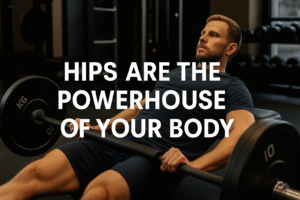
Your Hip Flexors are NOT Tight – Mobility Suite
- Dr. Mitch Israel
- Hips, Movement & Pain, Stretching

Your Hip Flexors Are NOT Tight: Here's the REAL Problem
If you’re dealing with hip flexor pain or front of hip pain, stretching your hip flexors might be your first instinct. But what if tight hip flexors aren’t the real problem? In this article, we’ll uncover why your hip discomfort may actually stem from hip impingement and show you three effective exercises to create more space in the hip joint and relieve hip pain.
If you prefer videos, watch the video version below!
Why Stretching Your Hip Flexors May Not Work
The assumption that tight hip flexors cause all front of hip pain is common, yet it’s often incorrect. Stretching the hip flexor muscles without relief may indicate that the root cause lies elsewhere. Many people experience hip flexor pain not because of tightness in the muscle but due to hip impingement—meaning there’s restricted movement within the joint itself. This limitation can feel like tight hip flexors, but the true issue is often mechanical.
Step 1: Test for Tight Hip Flexors
To check for actual tight hip flexors, try the Thomas Test:
- Lie on your back on a bench or bed.
- Hug one knee to your chest, letting the other leg hang off the side.
- Observe the leg that hangs down. If it remains parallel to the floor, your hip flexors are likely not tight. If it doesn’t, they may be contributing to your discomfort.
Most people pass this test, which suggests the hip pain isn’t from tight hip flexors. In that case, let’s move to a more likely culprit: hip impingement.
Step 2: Test for Hip Impingement
To identify hip impingement, try the FADIR Test (Flexion, Adduction, Internal Rotation):
- Lie on your back and bring your knee toward your chest (flexion).
- Pull the knee across the body toward the opposite shoulder (adduction).
- Internally rotate the hip by moving your foot outward with the knee bent.
If you feel pinching or front of hip pain during this test, hip impingement could be your issue. Hip impingement occurs when the ball of the hip joint lacks enough space for smooth movement, causing jamming or pinching that can mimic tight hip flexors.
3 Exercises to Relieve Hip Impingement
Now that you know tight hip flexors aren’t the main issue, try these exercises to address hip impingement and create more room in the hip joint.
Hip Extension Stretch This stretch helps open up the front of the hip joint and can relieve impingement.
- Get into a half-kneeling position with one knee on the ground.
- Tip your pelvis forward slightly for an anterior tilt, allowing a deeper stretch.
- Drive your hips forward gently to extend the hip.
Reps: Perform 10 reps per side, deepening the stretch with each rep.
Standing Hip Extension This is a great alternative for those who prefer a standing exercise.
- Stand near a wall for balance and engage your core.
- Drive your heel backward, keeping the focus on the hip flexor area and avoiding strain on the lower back.
Reps: Perform 10–15 reps per side, optionally adding a slight “kick” to increase the range.
Half-Kneeling Kettlebell Weight Shift This exercise uses weight to gently stretch and open the joint, targeting the front of hip pain.
- Begin in a half-kneeling position with a kettlebell in front of your chest.
- Shift your weight forward, letting the knee track over the toes, to feel a deep stretch in the hip and groin.
Reps: Perform 10–15 reps per side. The kettlebell’s weight helps deepen the stretch.
Wrapping It Up: Consistency is Key
If you notice immediate relief, that’s great! However, long-term relief from hip flexor pain and front of hip pain requires consistency. Aim to perform these exercises 2-3 times daily, spaced throughout the day. After two weeks, you’ll likely experience improved hip movement and less discomfort.
Next Steps: Stay Active and Pain-Free
If you struggle with chronic hip pain or pinching, these exercises may help address hip impingement and give your hips the freedom to move without discomfort. Add them to your daily routine, stay consistent, and enjoy pain-free, mobile hips.
If you struggle with tight hips or want to take your movement practice further, the Mobility Suite App offers routines specifically designed to improve hip mobility and counteract the effects of sitting.
You can start with a free 7-day trial! Whether you’re dealing with tight hips, a stiff neck, or chronic postural pain, the routines in the Mobility Suite will help you fix your hips and feel your best.
Start your free trial today and say goodbye to hip tension for good!




